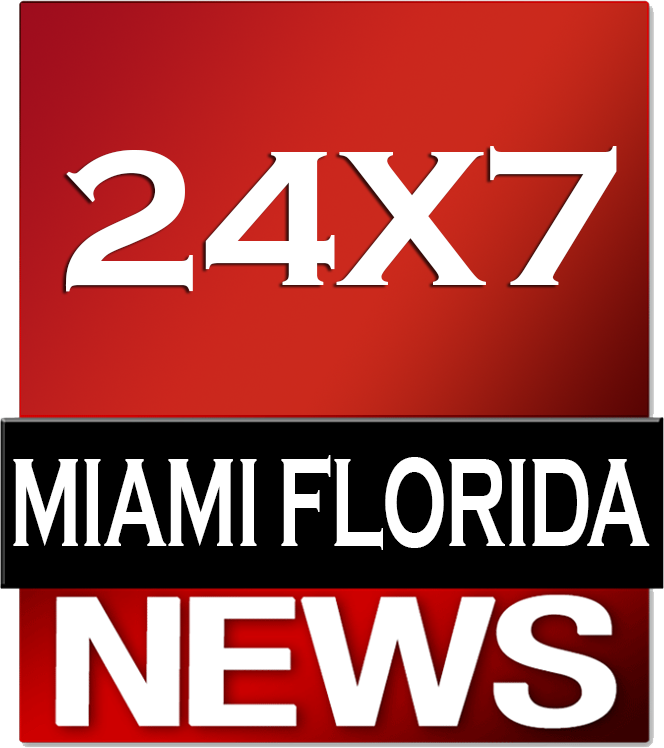In today's fast-paced and highly technical landscape, clear and concise technical documentation is crucial for developers, users, and businesses alike. Whether it's user manuals, system documentation, or API guides, creating effective technical documentation can make or break the user experience. In this article, we'll explore the key components, strategies, and tools necessary for creating technical documentation that is both efficient and easy to follow.
Understanding the Purpose of Technical Documentation
Before diving into the creation process, it’s essential to understand the purpose of the technical documentation you're writing. Technical documentation generally falls into several categories:
- User Documentation: Intended for end-users who need guidance on using a product or system.
- Technical Documentation: Designed for developers, engineers, or IT professionals who work on system implementations, integrations, or maintenance.
- API Documentation: Focuses on guiding developers on how to interact with specific APIs.
- Process Documentation: Details the workflows, guidelines, and best practices for an organization or department.
Understanding the audience and the purpose of the documentation will dictate the tone, structure, and complexity of the content.
Identify the Target Audience
Identifying your audience is one of the most critical aspects of creating effective technical documentation. Ask yourself the following questions:
- Who is the primary audience?
- What is their level of expertise?
- What specific information do they need?
For example, documentation intended for experienced developers might include in-depth technical jargon and code snippets, while user-facing documentation should avoid such complexity and focus on clear instructions and visual aids.
Choosing the Right Format
The format of your technical documentation will depend on its purpose and audience. Some common formats include:
- Guides and Tutorials: Step-by-step instructions, often with visual aids, that help users or developers achieve specific tasks.
- Reference Documents: Comprehensive, structured information that explains all aspects of a system or API.
- FAQs: Answers to common questions users might have.
- Quick Start Guides: Simple, brief instructions to get users or developers started quickly.
Consider the types of content (e.g., text, images, videos) that will be most effective for your audience and purpose. For technical documentation aimed at developers, including code samples, schematics, and workflows can enhance clarity.
Planning Your Content
Effective technical documentation needs a well-thought-out plan. Without proper planning, content may become disorganized or incomplete, leading to confusion.
Steps to Plan Your Documentation:
Outline the Main Sections: Create a clear structure that breaks down the information into digestible parts. Begin with high-level categories and subcategories.
List Key Concepts: Identify all the key concepts, terminologies, or tasks that need explanation.
Decide on Supporting Materials: Determine if diagrams, screenshots, or videos will be necessary to enhance understanding.
For example, if you're creating a user guide for a software platform, your outline may include sections like "Getting Started," "Core Features," "Advanced Functionality," and "Troubleshooting."
Writing in Simple, Clear Language
The cornerstone of effective technical documentation is simplicity. While your audience might have varying degrees of technical knowledge, your goal is to make complex information as accessible as possible.
Tips for Clear Writing:
Use Plain Language: Avoid unnecessary jargon. If you need to use technical terms, explain them clearly.
Be Direct: Focus on clear, concise sentences. Avoid long-winded explanations that might confuse the reader.
Use Active Voice: Active voice makes your documentation more dynamic and easier to follow. Instead of saying, "The system is configured by the user," say, "The user configures the system."
Additionally, avoid ambiguity by using specific terms and actions. For instance, instead of saying "the component may crash," specify the conditions under which it crashes: "the component crashes when memory usage exceeds 80%."
Structuring the Documentation
A well-organized document is easier to navigate and understand. Structuring your documentation effectively involves several key elements:
Table of Contents (TOC): For long documents, include a TOC at the beginning so readers can quickly navigate to the sections they need.
Headings and Subheadings: Break your content into sections with clear headings and subheadings to improve readability.
Numbered Steps or Bullets: For instructions, use numbered steps or bullet points to provide a clear, sequential flow.
Use of Hyperlinks: For online documentation, include hyperlinks to related sections or external references that provide more in-depth information.
For API or developer-focused documentation, categorizing by endpoints, function names, or feature sets ensures easy access to relevant information.
Incorporating Visuals
A picture is often worth a thousand words. Visual aids such as diagrams, screenshots, flowcharts, and videos can significantly enhance the clarity of technical documentation. They provide a visual context that may not be easily conveyed through text alone.
When to Use Visuals:
Complex Processes: Diagrams or flowcharts can help illustrate complex workflows or system architectures.
Step-by-Step Guides: Screenshots can provide visual context for each step in a process.
API Documentation: Diagrams that map out API request-response cycles or system integrations can be invaluable for developers.
When including visuals, ensure they are clear, labeled, and consistent with the surrounding text. Overuse of visuals can clutter your document, so use them where they add value.
Tools for Creating Technical Documentation
There are numerous tools available that can help streamline the creation of technical documentation. Some popular tools include:
Markdown Editors: Tools like Typora or Obsidian are great for writing structured, clean documentation in markdown format.
Document Collaboration Platforms: Google Docs, Confluence, and Notion are ideal for teams that need to collaborate on documentation in real-time.
API Documentation Tools: Postman and Swagger are excellent tools for generating and managing API documentation.
Diagram Creation Tools: Lucidchart, draw.io, and Microsoft Visio make it easy to create flowcharts, diagrams, and technical illustrations.
Screen Recording and Screenshot Tools: Tools like Snagit or Loom help you capture visuals and create screencast tutorials.
Choosing the right tool can simplify the writing process, improve collaboration, and ensure your documentation is easy to maintain and update.
Proofreading and Editing
Even the most well-written documentation can benefit from a thorough editing and proofreading process. Common issues include typos, unclear instructions, or inconsistencies in formatting or terminology.
Best Practices for Proofreading:
Check for Clarity: Have someone unfamiliar with the topic read through your documentation to see if they can follow along without confusion.
Consistency: Ensure all terminology, formatting, and style are consistent throughout the document. For example, if you're using American English spelling, make sure it’s consistent throughout.
Test Instructions: Any step-by-step instructions or code snippets should be tested to ensure they work as expected.
Using grammar-checking tools like Grammarly or language-specific linters for code documentation can help catch errors early in the process.
Maintaining and Updating Documentation
Effective technical documentation is not static. As your product evolves, so should your documentation. An outdated document is worse than no document at all, as it leads to confusion and frustration.
Strategies for Keeping Documentation Updated:
Version Control: Use version control systems like Git to track changes in documentation alongside codebase updates.
Regular Audits: Schedule regular reviews of your documentation to identify outdated information or gaps that need to be addressed.
User Feedback: Encourage users and developers to provide feedback on the documentation, highlighting unclear sections or errors.
Creating effective technical documentation is essential for ensuring users and developers can understand and use your product efficiently. By understanding the audience, using clear language, organizing content effectively, and incorporating visuals and the right tools, you can create documentation that enhances user experience and reduces support queries. Regular maintenance ensures that your documentation remains accurate and valuable over time, serving as a vital resource for your audience.
FAQs
1. What is technical documentation, and why is it important?
Technical documentation provides detailed information about a product, system, or process to help users, developers, or IT professionals understand and use it effectively. It is crucial because it improves user experience, reduces the need for support, and ensures that complex information is communicated clearly.
2. How do I determine the appropriate format for my technical documentation?
The format of your technical documentation should be determined based on its purpose and target audience. Common formats include guides, reference documents, FAQs, and quick start guides. Consider whether your audience needs step-by-step instructions, comprehensive references, or brief overviews to decide on the format.
3. What are some best practices for writing clear technical documentation?
To write clear technical documentation, use plain language and avoid unnecessary jargon. Write in an active voice, be direct and concise, and provide specific information. Break down complex topics into manageable sections and use numbered steps or bullet points for instructions.
4. How can I ensure my technical documentation is well-organized?
Structure your documentation with a clear outline, including a Table of Contents (TOC) for long documents. Use headings and subheadings to categorize information, and employ hyperlinks for online documents to aid navigation. Numbered lists or bullet points help make instructions easy to follow.
5. What types of visuals should be included in technical documentation?
Visuals such as diagrams, screenshots, flowcharts, and videos can enhance technical documentation. Use diagrams to illustrate complex processes, screenshots for step-by-step guides, and videos for tutorials or demonstrations. Ensure visuals are clear, labeled, and relevant.
6. What tools are recommended for creating technical documentation?
Popular tools for creating technical documentation include Markdown editors (e.g., Typora, Obsidian), document collaboration platforms (e.g., Google Docs, Confluence), API documentation tools (e.g., Postman, Swagger), diagram creation tools (e.g., Lucidchart, draw.io), and screen recording tools (e.g., Snagit, Loom).
7. How important is proofreading and editing in technical documentation?
Proofreading and editing are essential to ensure the documentation is free from typos, errors, and inconsistencies. It helps improve clarity, correctness, and usability. Testing instructions and having someone unfamiliar with the topic review the documentation can help catch mistakes and ensure it is user-friendly.
8. How can I keep my technical documentation up to date?
To keep your technical documentation updated, use version control systems like Git to track changes, schedule regular audits to review and revise content, and gather user feedback to identify areas for improvement. Regular updates ensure that your documentation remains accurate and relevant.
9. What should be included in a Table of Contents (TOC) for technical documentation?
A TOC should include all major sections and subsections of your documentation, allowing readers to navigate easily. For online documentation, ensure that the TOC is interactive, enabling users to click through to different sections directly.
10. How can I tailor my technical documentation for different audiences?
To tailor documentation for different audiences, understand their specific needs and expertise levels. For end-users, use simple language and clear instructions. For developers, include technical details, code samples, and API references. Adjust the content and complexity based on the audience's familiarity with the subject matter.
Get in Touch
Website – https://www.webinfomatrix.com
Mobile - +91 9212306116
Whatsapp – https://call.whatsapp.com/voice/9rqVJyqSNMhpdFkKPZGYKj
Skype – shalabh.mishra
Telegram – shalabhmishra
Email - info@webinfomatrix.com









 English (US) ·
English (US) ·